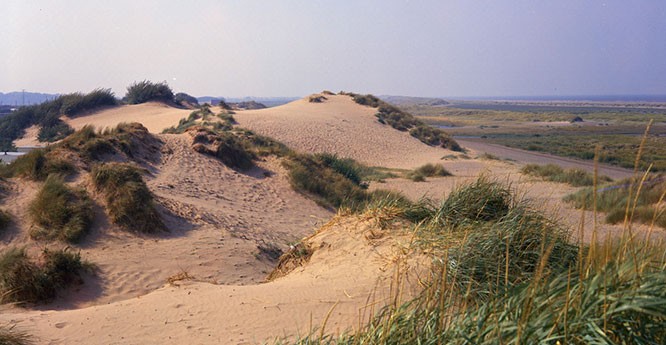Deposition is a fundamental geological process that plays a crucial role in shaping the Earth’s surface. In simple terms, it is the laying down or accumulation of sediments. These sediments can be transported by various agents such as wind, water (flowing water and the sea), and ice. The material deposited can range from tiny particles like mud and silt to larger fragments like sand, pebbles, and even boulders. Understanding deposition is essential for comprehending the formation of various landforms and geological features.
Deposition by Wind: Aeolian Processes
Wind is a powerful agent of erosion and deposition, particularly in arid and semi-arid environments. The process by which wind transports sand grains is often referred to as “saltation.” Saltation involves sand grains being lifted into the air and bouncing along the ground. When the wind velocity decreases or encounters an obstruction, these grains are deposited. Over time, the accumulation of wind-blown sand can lead to the formation of impressive sand dunes. The shape and size of sand dunes are influenced by wind direction, velocity, and the availability of sand.
Sand dunes mark a former shoreline near Prestatyn, North Wales, showcasing wind deposition.
Deposition by Water: Fluvial and Coastal Processes
Water, in its various forms, is a significant agent of deposition. Flowing water, such as rivers and streams, erodes and transports particles of soil and rock. The capacity of water to carry sediment depends on its velocity and volume. As the water slows down, it loses its carrying capacity and starts to deposit the sediments. The largest, heaviest particles are deposited first, followed by progressively smaller particles as the water decelerates further.
A prime example of water-related deposition is the formation of alluvial fans. These fan-shaped deposits occur where a mountain stream flows onto a flatter plain. The sudden decrease in slope causes the stream to lose energy, resulting in the deposition of sediment. The coarsest materials (gravel, pebbles, and sand) are deposited near the apex of the fan, while finer sediments are carried further down.
Dissolved materials, primarily ions from dissolved minerals, are also transported by water. These ions may precipitate out of solution and deposit as mineral deposits or contribute to the salinity of the ocean.
Alluvial fans around Loch an Duin, Scotland, demonstrate sediment deposition by flowing water.
Coastal environments are also subject to significant deposition. Waves and currents transport sediments along coastlines. When wave energy decreases, sediments are deposited, leading to the formation of beaches, spits, and shoals. These coastal features are dynamic, constantly changing due to the interplay of tides, waves, and currents. The seasonal changes in wave energy can result in the erosion or accumulation of sand on beaches.
Sedimentation creates sand and shingle spits at the mouth of the River Tyne, East Lothian, through coastal deposition.
Deposition by Ice: Glacial Processes
Glaciers are powerful agents of erosion and deposition, especially in alpine and polar regions. Glaciers move slowly under their own weight, carving the landscape as they advance. They pick up sediments and rocks of all sizes, including massive boulders. Glaciers can transport these materials over long distances. When a glacier melts and retreats, it deposits its load of sediment, creating distinctive glacial landforms.
The unsorted mixture of sediment deposited directly by a glacier is called till. Till typically contains a range of particle sizes, from clay and sand to pebbles and boulders. Moraines, which are ridges of till deposited at the edges or base of a glacier, are characteristic features of glaciated landscapes. Glacial erratic boulders are large rocks that have been transported by glaciers and deposited far from their source, often composed of rock types different from the local bedrock.
Glacial erratic boulders perched at the side of Llyn Idwal, Snowdonia, are remnants of ice deposition.
Conclusion
Deposition is a critical process in the Earth’s system, responsible for the creation of various landforms and the accumulation of sediments. Wind, water, and ice are the primary agents of deposition, each leaving its unique signature on the landscape. Understanding the principles of deposition is essential for geologists, geographers, and anyone interested in the dynamic processes that shape our planet. From the formation of sand dunes and alluvial fans to the creation of beaches and glacial moraines, deposition plays a pivotal role in shaping the world around us.

